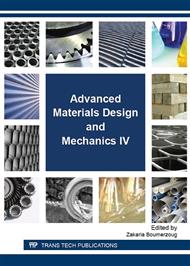p.59
p.64
p.70
p.74
p.83
p.89
p.96
p.101
p.108
Study on Influence of Silicon Crystal Dislocation on Removal in Atmospheric Pressure Plasma Polishing
Abstract:
Compared to perfect crystal lattice, typical edge dislocation structure has been modeled by quantum chemistry simulation in order to analyze the influence of crystal structure defects on removal process in atmospheric pressure plasma polishing (APPP). The Partial density of states (PDOS), number of states, average number of bonding electrons and energy have been calculated and analyzed further for these models. The analysis results reveal that silicon crystal with edge dislocation can be etched more easily than that of perfect crystal lattice. It is also found that the removal rate of sample with higher dislocation density is larger than that of lower dislocation density in the same experiment conditions. Thus, theoretical simulation demonstrates that structure dislocation is helpful for raising the etching rate, which accords well with testifying experiments results. But maybe structure dislocation could deteriorate surface roughness to some extent in initial stage of machining, as the dislocation structure is usually etched unevenly, although this is just a transition period.
Info:
Periodical:
Pages:
83-88
Citation:
Online since:
November 2016
Authors:
Price:
Сopyright:
© 2017 Trans Tech Publications Ltd. All Rights Reserved
Share:
Citation:


